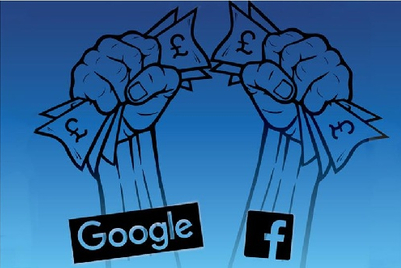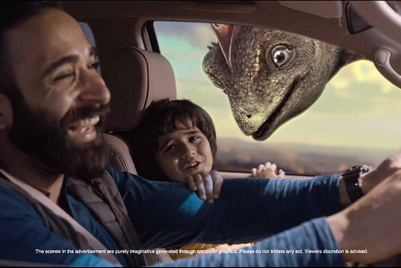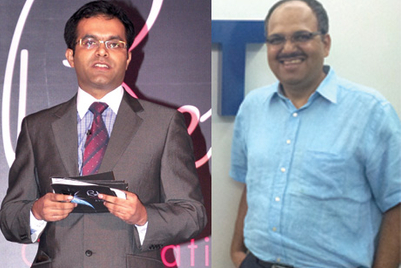Experienced marketers have long understood "made for TV" and "made for online" videos are two quite different things, as each type of film serves a different purpose, and the influence that each is trying to have on a consumer is also very different.
However, what is most surprising is how "Made for TV" thinking keeps coming back again and again, like a zombie that refuses to die.
Traditional TV follows a well-established model - put an ad in front of the consumer and the job of that advert is to get noticed in a way that it raises the awareness of the brand. Which still continues to be measured in terms of the Millward Brown Awareness Index (AI).
Ditch the traditional metrics
With data weighing heavily on the minds of marketers, there are very few who are playing the long game in trying to understand new ways of measuring effective campaigns. Instead, we see a continuing over-reliance on metrics like the AI score, which does the job it has been designed for – measuring lift in branded awareness. The rules however have changed in the digital age.
For instance, engaging online videos ads do not need to generate awareness – the consumer has already agreed to watch them. In that case, the AI score is measuring the effectiveness of interruption – a highly irrelevant score, which explains why ‘made for TV’ ads perform poorly online.
One piece of great work online isn't enough
While with TV the success of one piece of execution has little bearing on the success of others, online communication is like a chain with each piece able to boost or condemn the ROI of all future pieces. The real test, therefore, is not "did this catch the consumer’s attention?", but, "Did this meet our promise to the consumer so that they are open to hearing from us again?" The AI score falls flat on that count as well.
Underlying the traditional approach are further assumptions that just don’t translate to digital –for example, if one piece of work is great, then the marketer or the agency thinks that their work is done.
In the digital world, however, even with one outstanding piece of content the online beast is not satiated for long. It is increasingly becoming less about individual pieces of creative, but more about finding a content strategy that allows for a brand to produce good content regularly. Think Red Bull and MAC Cosmetics. Is there an alternative to how you measure online?
Brands should instead start focusing on 'grip'.
What is grip?
The ability of a brand activity to organically attract new followers, subscribers and fans. It does not mean a multi-million pound campaign. No, instead brands need to make sure that each individual piece of content when put together can relentlessly take the brand forward.
And how do you measure it? Grip is measured in ratios. As a marketer, you need to ask yourself: "What is our brand's online engagement rate?" and "How many new subscribers are we getting per video view?" instead of "How many views has this video had?"
How do you achieve Grip?
By running lots of small activities. Each individual activity does not have to be huge in terms of spend or even reach, but if each attracts a few more followers, subscribers, or fans to the brand, it relentlessly and unceasingly leaves the brand in a better position than before.
The digitally savviest brands have lots of content that they push across multiple platforms, and winning brands benefit from the mathematics of compound interest. Brands also need to remember that each gain is permanent, and increases the effectiveness of the brand’s communication for the rest of time, too.
But most importantly, brands that take a long-term view of its digital strategy will be disproportionally rewarded in comparison to those who don't.
Red Bull, Burberry and Chanel are doing it right, now
There are very few brands that do this consistently. Brands like Red Bull, Burberry and Chanel are fine examples. Burberry’s largest follower gains happened around its A/W14 shows during London Fashion Week, where it live cast its events featuring the latest products and behind the scenes footage.
Chanel is another brand that has a firm 'grip' on its audience - with over four million followers and growing on Twitter, it continue to keep its audience involved by interacting with them, by tweeting photos and videos, and answering questions.
These brands have got big, and are extending their lead. In another example, the big automotive brands on social media – Audi, BMW and Mercedes who are not only the biggest prestige car brands in digital space but are also growing the fastest in terms of new fans, followers and subscribers.
These German brands see their largest gains during motor shows by winning more fans and followers who want to be the first to hear about the latest news and events exclusives.
In the digital world, marketers and brands will have to start adapting to the new rules of engagement and metrics.




.jpg&h=334&w=500&q=100&v=20250320&c=1)
.jpg&h=334&w=500&q=100&v=20250320&c=1)



.jpg&h=334&w=500&q=100&v=20250320&c=1)
.jpg&h=334&w=500&q=100&v=20250320&c=1)


.jpg&h=334&w=500&q=100&v=20250320&c=1)





.jpg&h=268&w=401&q=100&v=20250320&c=1)


